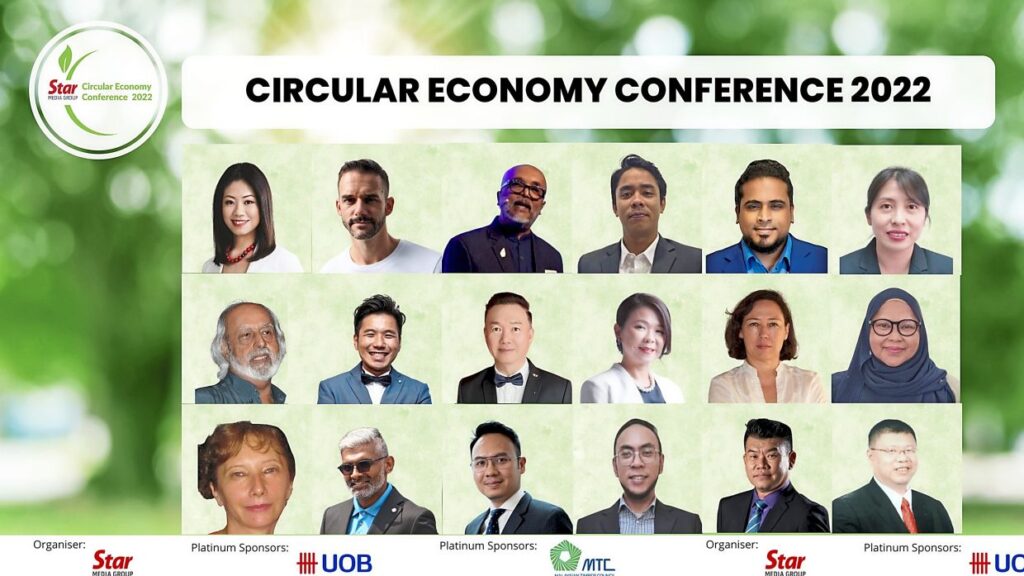
PETALING JAYA: As the population grows rapidly, consumption of raw materials is also on the rise, with most natural resources being finite in nature.
Against this backdrop, calls for a shift from our current economic model, a “take, make, waste” economy, or linear economy, to a circular “reduce, reuse, recycle” one, are increasingly urgent, experts say.
“The linear economy model, prevailing today, is heavily extractive and carbon intensive. It consumes over 100 billion tonnes of raw materials a year and ends up wasting more than 90%.
“In a circular economy, we can cut materials use by up to 284%, because waste is eliminated, materials are re-used, and nature is regenerated,” said UOB Malaysia CEO Ng Wei Wei in a conference recently.
“The concepts of circularity – from regenerative agriculture and bartering, to repair and reuse have been around. With these ideas, we can remove sources of waste across our value chains and unlock trillions in economic value, while promoting access to healthier goods and services,” said Ng.
To generate awareness among the public on circular economy, platinum sponsors including the Malaysian Timber Council (MTC) and UOB Malaysia partnered with Star Media Group to organise the virtual Circular Economy Conference recently.
Among its highlights was the panel discussion on “Recycling & the Circular economy: What’s the difference?”.
In the discussion, Malaysian Green Technology And Climate Change Corporation division of technology solutions technical specialist Roslina Muhammad noted the social and economic development of a country along with the general welfare of communities has much to do with waste management.
“We may need to rethink the overall waste management issues, in particular the recovery of waste, by enabling waste to be transformed into resources that can be reintroduced into the economy as a secondary raw material, leading to both environmental and economic advantages,” said Roslina.
At the beginning of the fourth quarter last year, SJ Varied project director Ashwin Kumaran, noted that Malaysia was only achieving about a 10.5% recycling rate with about 10,000 tonnes of waste ending up in landfills.
“For Malaysia to transition fully into the circular economy, I believe we need to achieve a 90% recycling rate,” said Ashwin.
Contrary to what many think, circular economy varies from recycling.
“Circular economy is essentially an economic model that looks into the life cycle of a production and consumption in a loop. In short, it is cradle to cradle, while recycling normally happens only at the end of a product’s life cycle and is actually an essential component of the circular economy,” said UNDP Malaysia, Singapore and Brunei Darussalam interim head of sustainable and resilient development Gan Pek Chuan in the panel discussion.
Roslina added Malaysia is equipped with basic tools through policies and guidelines set up by the government, to make the transition into a circular economy.
Some of these policies include the 12th Malaysia Plan, the launching of the Malaysia Plastics Sustainability Roadmap and the establishment of the National Circular Economy Council.
While awareness on sustainability is gaining traction among corporations, it is still quite nascent overall.
In the panel discussion on “The Economic Benefits of Circular Economy”, Renewcell co-founder and business development director Mohd Hazny Aziz shared how awareness and acceptance in circularity practices was one of their biggest challenges starting out.
“It has been the norm for suppliers and battery users to replace rather than find solutions to prolong the lifespan of a battery. When we tried to champion the reuse of a battery with an improvised capacity, we hit a roadblock moving forward at that time,” said Hazny.
PwC Malaysia supply chain, operations and sustainability lead Redha Shukor stated in driving active circular economy practices, companies looking to incorporate green initiatives need to understand the sentiments of the market.
“Companies need to be aware of the shifting demographics and leverage publicly available information to understand what is important to consumers,” said Redha.
Other than that, the road to sustainability requires collaboration and synergy across industries.
“To a certain degree, this kind of collaboration extends to their competitors. Such a joint effort is also very much advocated through the United Nations Sustainable Development Group (UNSDG), particularly SDG 17,” said Redha.
BMW Group Malaysia head of corporate communications and sustainability Sashi Ambi, in the panel discussion on “Malaysia’s Sustainable and Circular Future”, noted the group is collaborating with one of its customers to give oils, lubricants, solvents emitted by automobiles a new lease of life.
“We are working with them to collect, recycle and break down these solvents to remove soot and reintroduce the processed product in a secondary industry for smaller machines like lawn mowers and small motor boats This expanded our business opportunities going beyond the group,” said Sashi.
Within the discussion Berjayapak CEO Ooi Lay Pheng noted that it is a win-win situation for businesses to shift towards sustainability.
Ooi agreed that although there were upfront costs to adopt circular economy principles, there were significant cost benefits over time.
“Not only are we able to reduce the need to build new packaging articles, this also translated into cost cuts for our customers. It has widened our business potential and market penetration,” said Ooi.
It was also pointed out that communication between corporations and their customers is crucial.
“We educate our clients by providing trial samples, technical specifications as well as performance and cost reports before they make a decision,” said CEO of Snapp Packaging Phillip Tan.
Looking into specific examples, Hijjas Kasturi Associates Sdn Bhd principal director Dr Serina Hijjas, in her presentation, shared that a net zero future is attainable.
Serina represented Malaysia in the recent Dubai Expo and won the competition to showcase sustainability through the construction of the Malaysian pavilion.
“It is the first net zero pavilion in all of the exhibitions across the world. When we built it, we wanted to make the smallest footprint.
“Instead of the typical materials like concrete and glass, we used sustainable timber which has a lower embodied energy, about 20% to 60% less carbon compared to reinforced concrete. It is also demountable,” said Serina.
Solid Horizon managing director James Yeoh said they upcycle shipping containers into offices and houses in collaboration with other industry players.
“A shipping container has four tonnes of steel. Recycling one tonne of steel, by melting it down, will emit 1.85 tonnes of carbon footprint. By upcycling them, 7.4 tonnes of carbon footprint is saved.
“To date we have upcycled 7,000 shipping containers and saved 21.5 thousand tonnes of steel from landfills as well as 14,000 tonnes of carbon emissions,” said Yeoh.
Ultimately, MBPJ Solid Waste Management and Public Cleansing Department director Lee Lih Shyan, in the panel discussion on “Designing a Circular City”, said it is a matter of educating the public to change their behaviour to lead a sustainable lifestyle.
“In one take-out meal, an individual can use up to four plastic bags, each with a lifespan of 10 to 15 minutes. Therefore, the public needs to be educated on the origin and destination of the waste they generate so that they understand how they are wasting the resources,” said Lee.
Co-founder of Handprint Tech, Simon JD Schillebeeckx, noted in the long run, the more sustainable approach is to give consumers something that they can believe in and benefit from.
“You need to incentivise people to choose alternatives. The approach to propel change by guilt-tripping them is unlikely to pan out in the long term.
“For example, if you provide a reusable food container with a QR code by which people can win cash prizes when they scan the code, it becomes interesting. This kind of sustainable behaviour will lead to behavioural shifts,” said Simon.
This was echoed by CEO of Arus Oil Syazwan Majid who set up a recycling platform for used cooking oil via an app which allows households to request for door-step collection of their used cooking.
He stated that sustainability is a shared responsibility in every level of society.
“In order to create a sustainable economy, every individual or entity should be able to contribute. This goes on throughout the entire value chain from producers to manufacturers to consumers,” he said.
This was concurred by the chairman of CETDEM, Gurmit Singh who took water as an example of a resource that needs to be recycled as well.
“Water used in agriculture needs to be recycled. Everything must have a purpose and the purpose must be for the good of the environment and humankind,” said Gurmit.
Source : The Star

